#1930s
Rare Rides Personas: Powel Crosley Junior, Tiny Cars, Radio, and Baseball (Part VI)
Powel Crosley Junior’s life was in expansion mode in the late 1920s, both professionally and with regard to real estate. Previously, we covered his AM radio goals via the ever more powerful 700 WLW station, his new company HQ in Cincinnati, and the growth of his personal real estate with new estates in Cincinnati and Sarasota. But those goings-on didn’t distract Crosley from the entrepreneurial interests he always maintained. Let’s talk about airplanes.
Abandoned History: Daewoo Motors, GM's Passport to International Sales (Part I)
Sometimes all it takes is a Tweet to generate a new Abandoned History series. A seemingly simple request: coverage of some GM models from the early 2000s, specifically a Daewoo. But there’s a long, winding, and dramatic history behind Daewoo Motors. The company’s origins trace back to the 1930s, and the very first Korean car.
Throughout the ensuing decades, Daewoo Motors was formed, reformed, bought and sold, and generally passed around in Korea. Along the way, it offered other brands’ vehicles, its own, and even purchased a smaller carmaker. So sit back and relax as we travel to Korea in 1937, during the latter part of the country’s Japanese occupation.
Junkyard Find: 1938 Oldsmobile Touring Sedan
Most of the inventory at your typical Ewe Pullet-style big self-service car graveyard will be vehicles between about 15 and 25 years old, though you'll see some much newer 500s and Mirages while discarded machinery of the 1970s and 1980s remains easy enough to find. The 1930s, though— that's a different story. While you will run across prewar iron in a generations-old family junkyard, I've managed to document but a single 1930s car in a U-Wrench-type facility prior to today. Here's the second: a once-glamorous 1938 Buick in an excellent yard in Cheyenne, Wyoming.
Rare Rides Icons: The Lincoln Mark Series Cars, Feeling Continental (Part X)
We resume our tale of the Mark series cars today, during a period of recovery for Lincoln and their Continental lineup. The introduction of all-new unibody Lincolns in 1958 saw questionable over-the-top styling debut right at the start of a sharp recession. Most people didn't enjoy the looks of the new Mark III. Lincoln toned down the glitz for the '59 models, with better-integrated styling cues here, and less bulbous sheet metal there.
A new naming scheme arrived in 1959, Mark IV Continental, as Continental became a version of Mark. At the same time, Ford attempted to take the Continental upscale via the introduction of the more spacious (but not longer outside) Mark IV Continental Town Car and Limousine.
With a better US economy, Lincoln improved its sales figures considerably in 1959. However, the portion of those sales that were Continental models dropped by almost 12 percent. However, given all the millions Ford poured into its new Lincoln models it was not prepared to ditch them after just two years. There was a third year of the unibody Mark, with the highest series number yet: V.
Rare Rides Icons: The History of Stutz, Stop and Go Fast (Part XVII)
We’re back again with more Stutz history, and our coverage of the bric-a-brac produced by the Stutz Neoclassical company as complementary offerings to two-doors like the Blackhawk, Bearcat, and Bearcat II. In our last entry, we covered the Duplex, a sedan that (unsuccessfully) wore Blackhawk styling. Based either on a Pontiac or a Cadillac, the Duplex was the ultimate production version of the Ministeriale prototype sedan built by Carrozzeria Padane.
With an astronomical ask of $32,500 ($251,312 adj.) circa 1970 and styling that hadn’t translated well into a sedan, the Duplex was a non-starter. Just one was ever made, and it was sold to a criminal in Utah. But that didn’t deter CEO James O’Donnell, who was insistent a Stutz sedan was viable. A few years later there was another Stutz sedan presented: IV-Porte.
Rare Rides Icons: The History of Stutz, Stop and Go Fast (Part XVI)
We return to our long-running Stutz historical coverage today, with a few of the odds and ends vehicles that were never the headliners of Stutz’s brand portfolio. During the Seventies and Eighties, the Blackhawk and targa roof Bearcat funded some other fun ideas that occupied the thoughts of company CEO James O’Donnell.
In our last entry, we covered what was perhaps the strangest offering of the latter Stutz entity, a C/K era Suburban that concealed a mounted machine gun in its interior. The armored SUV was subsequently turned into a gun-free dictatorial parade sedan with targa roof, and a trunk. The be-trunked Suburban also donated its shape to an upright regular sedan and six-door funeral transport.
And while the Stutz Suburban takes were intended for foreign heads of state for security and coup d’etat purposes, the Stutz sedans were directed at the company’s more traditional American customer: Someone who feared no peasant uprising but did enjoy flashy styling and lots of elegance. Introducing the Duplex.
Rare Rides Icons: The Lincoln Mark Series Cars, Feeling Continental (Part IX)
Our Lincoln Mark Series coverage continues today, and we pick up at the end of 1958. After Ford dumped many millions into the Continental Division and quickly shut it down, the company then spent a lot more money to develop an all-new unibody platform for Lincoln’s usage. In an attempt to woo customers away from Cadillac, the new Lincolns for 1958 wore some of the most shocking styling ever to come from Detroit.
All three of Lincoln’s new “models” were really just trim levels of the same car. Said models included Capri, Premier, and the top-tier Continental Mark III, which was not a Continental except in trim badges. At least it had a Breezeway window! At the 1958 launch of Lincoln’s new unibody line there was a steep recession across the globe, as lots of Americans decided they didn’t actually need a new car every year or two. Nevertheless, the Continental Mark III made up 62 percent of Lincoln’s sales that year. Lincoln veered off on a revised course in 1959, hoping to improve its lot with some more “new” models.
Rare Rides Icons: The History of Stutz, Stop and Go Fast (Part XV)
Last time in our tale of Stutz the company finally realized its dream of a true convertible, the Bearcat II. The original product dream of CEO James O’Donnell, the Bearcat II went on sale in 1987. Though the company’s fate was pretty much sealed by that time, Stutz had its heyday of models circa the early Eighties. Spoilers: Machine guns were involved.
Rare Rides Icons: The Lincoln Mark Series Cars, Feeling Continental (Part VIII)
With the Continental Division dead, a cost-weary and (newly) publicly traded Ford Motor Company headed into the 1958 model year determined to unveil a solid luxury car showing against its primary rival, Cadillac. However, the “Continental Mark III by Lincoln” was a Continental in name only: It wore the same metal and was produced at the same new factory, Wixom Assembly, as the rest of the Lincoln models (Capri, Premiere) that year.
Brass at Ford hoped the Continental name on the Mark III would make customers believe it was something special, like the Cadillac Eldorado with which it competed. As mentioned last time, aside from its Continental name, the Mark III for 1958 used One Simple Trick to lure buyers into its leather seats: a Breezeway window. First up today, pricing problems.
Rare Rides Icons: The History of Stutz, Stop and Go Fast (Part XIV)
We return to our coverage of the reborn and neoclassically-focused Stutz Motor Company today, at a point of considerable change in the company’s model portfolio. “Portfolio” may be a bit generous, but for a few years the company did produce a handful of different models.
Since Stutz was relaunched in 1970 its main offering was the Blackhawk coupe, in both its original 1969 Pontiac Grand Prix basis and downsized B-body Pontiac Bonneville basis. But Stutz CEO James O’Donnell always wanted a true convertible in the Stutz lineup. That wish was finally realized with the Bearcat II.
Rare Rides Icons: The Lincoln Mark Series Cars, Feeling Continental (Part VII)
The Continental Division was in a very difficult place when it designed an all-new Mark III as the (sedan only) replacement for the slow-selling and super expensive Continental Mark II coupe. As we learned last time, shortly after the Mark II went on sale the Continental Division was already on its last legs. It continued to lose money hand over foot after Ford’s huge initial investment and was doomed to a quick closure.
And so it was the 1956 and 1957 Mark IIs became the only Continental Division product and the only Marks that were hand-assembled in a factory-built, especially for Continental. After Continental’s closure, Ford’s new VP of passenger vehicles Lewis Crusoe quickly dismantled the division and integrated its employees into Lincoln. The Continental factory became the Edsel factory, and the three extant Mark III prototypes became a burden.
Rare Rides Icons: The History of Stutz, Stop and Go Fast (Part XIII)
We pick up the Stutz story once again today after we reached the conclusion of the neoclassical Blackhawk coupe’s life in 1985. The coupe that sold so well in the Seventies with its exaggerated Exner styling was watered down considerably in the Eighties when it switched from its original 1969 Pontiac Grand Prix roots to those of a 1980 two-door Pontiac Bonneville.
However, even though the Blackhawk was the headline and best-known product from the Stutz neoclassical company, it was not the only car in the portfolio. First up: the Bearcat.
Rare Rides Icons: The Lincoln Mark Series Cars, Feeling Continental (Part VI)
We pick up the story of Lincoln’s Mark series cars once again today, at a low point in the coupe’s history. The intensely expensive development and launch of the new Continental marque arrived at exactly the wrong time for Ford.
Shortly after the family-owned company spent $21 million ($227 million adj.) on the launch of its new super-luxury brand, the company had its IPO. That meant the big money poured into the black hole that was Continental was visible to everyone who cared to see, including shareholders. The pressure was just too much, and the Continental brand was canceled in 1956 by Henry Ford II, just a year after the Mark II entered production.
But let’s back up a year, right as the Mark II went on sale. Management of the Continental Division knew the singular, hand-assembled model was not enough to keep the company going. They needed to save and make more money, and fast.
Rare Rides Icons: The History of Stutz, Stop and Go Fast (Part XII)
In our last entry in the Stutz saga, we covered the final few years of the Blackhawk that originated in 1971. Through various trim transformations and minor updates, the ’71 lived all the way through the 1979 model year. That final year it was also transformed into the very rare Bearcat targa convertible. But the winds of change were blowing: Detroit downsizing was already well underway, and Stutz was out of 1969 Pontiac Grand Prix platforms to use. The incredibly expensive Blackhawk sold roughly 350 examples in its first generation.
Because of domestic market downsizing, the contemporary G-body Grand Prix of 1980 wasn’t large enough for Blackhawk purposes. Instead, Stutz turned to the B-body platform, and specifically the Pontiac Bonneville’s two-door variant. And though it was marketed as a coupe by GM, the roofline was so formal your author would file it as a two-door sedan. In any event, the new hardpoints of the Bonneville meant considerable visual changes on the 1980 Blackhawk coupe.
Rare Rides Icons: The Lincoln Mark Series Cars, Feeling Continental (Part V)
We arrive today at the fifth installment of our Rare Rides Icons coverage on the Lincoln Mark series cars. Thus far we covered the first Continental of the late Thirties, and Ford’s desire to go ultra luxury with the Mark II sold under the newly minted Continental Division. The Mark that debuted for the 1956 model year was Mid-century in its styling, built of top quality components, and constructed in a methodically controlled manner via a QC program that consisted of seven initiatives.
It was time to put the new Continental Mark II coupe on sale.



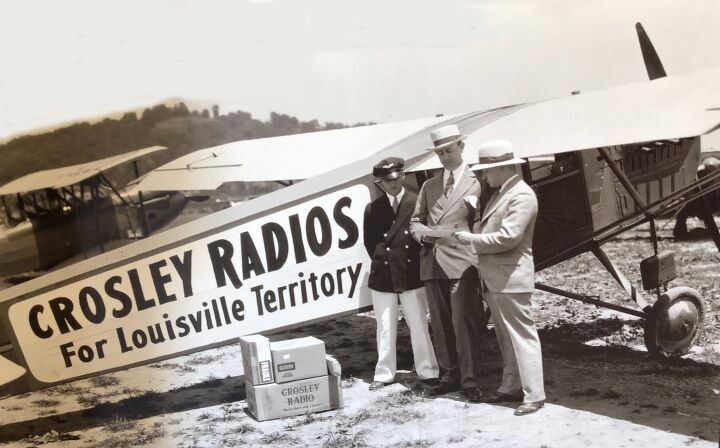

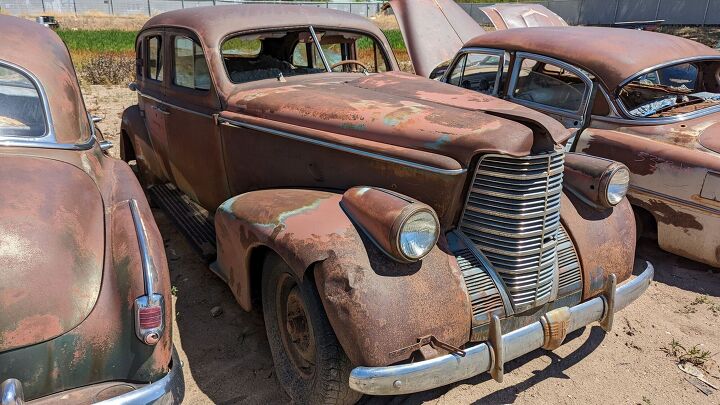

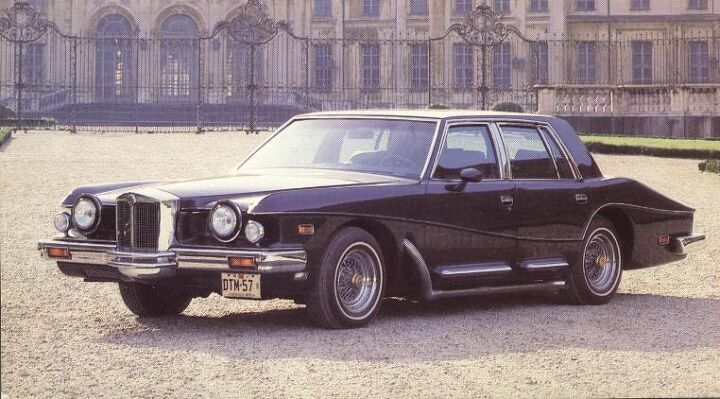
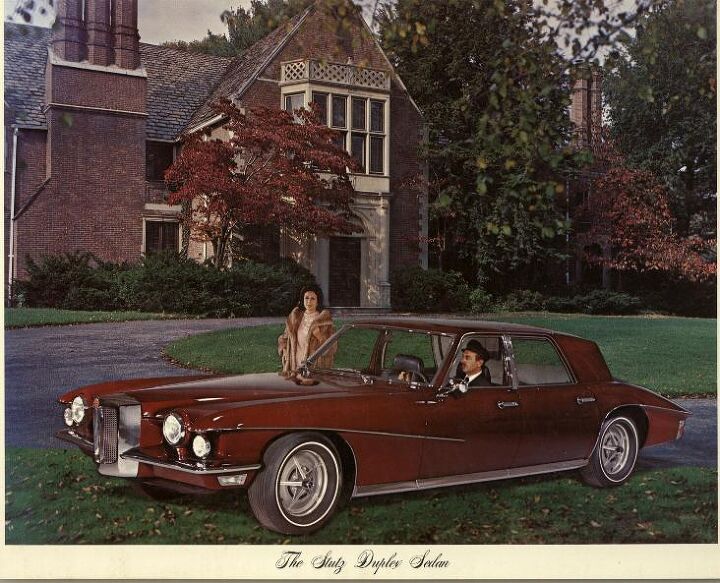



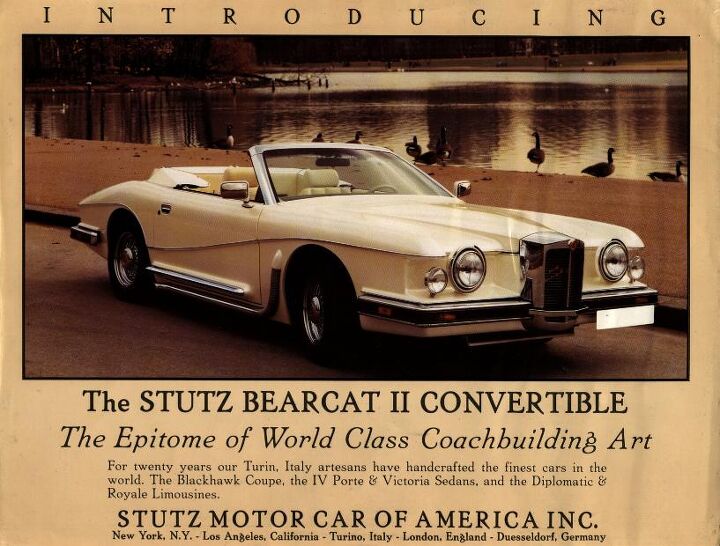

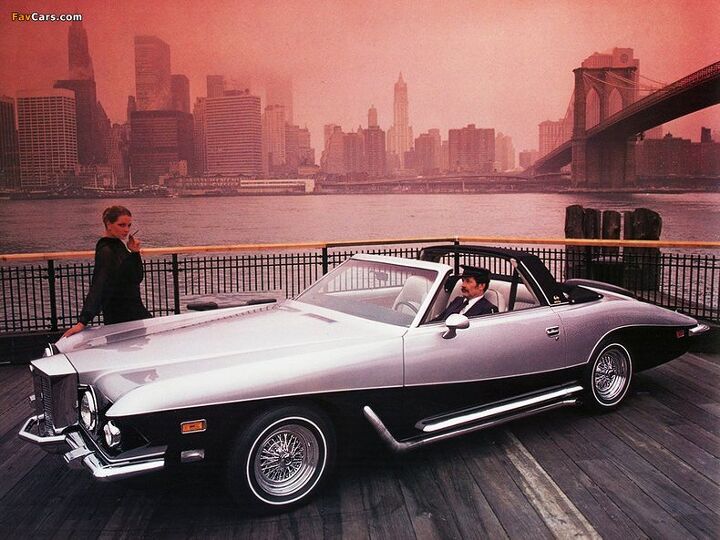
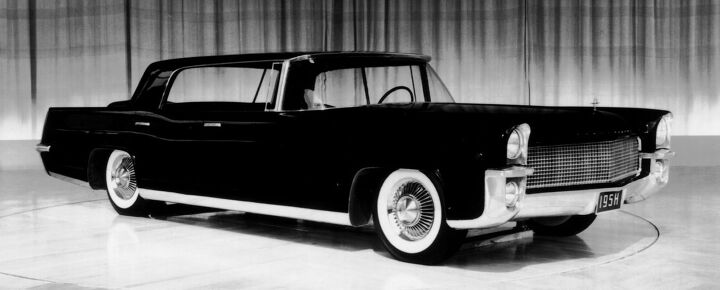
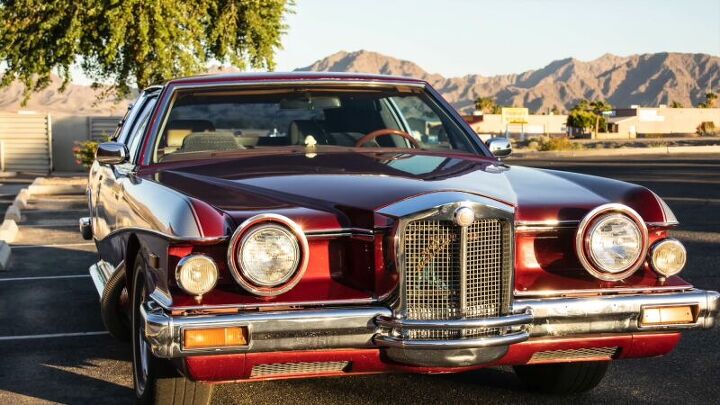
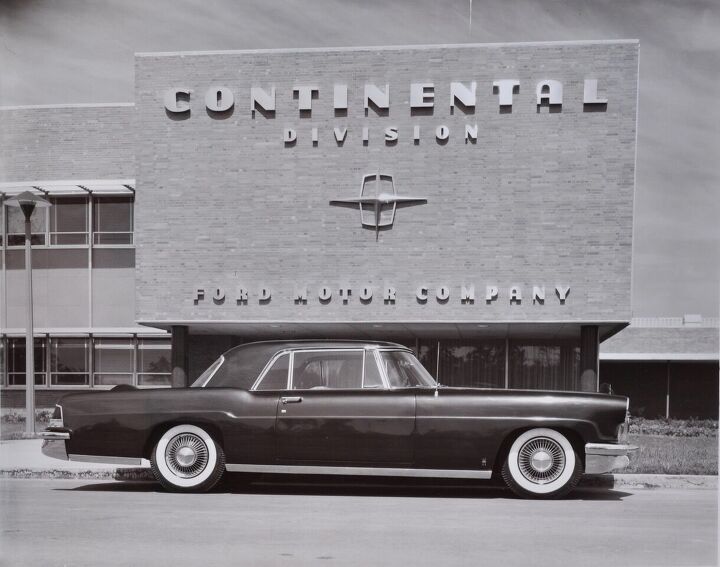












Recent Comments